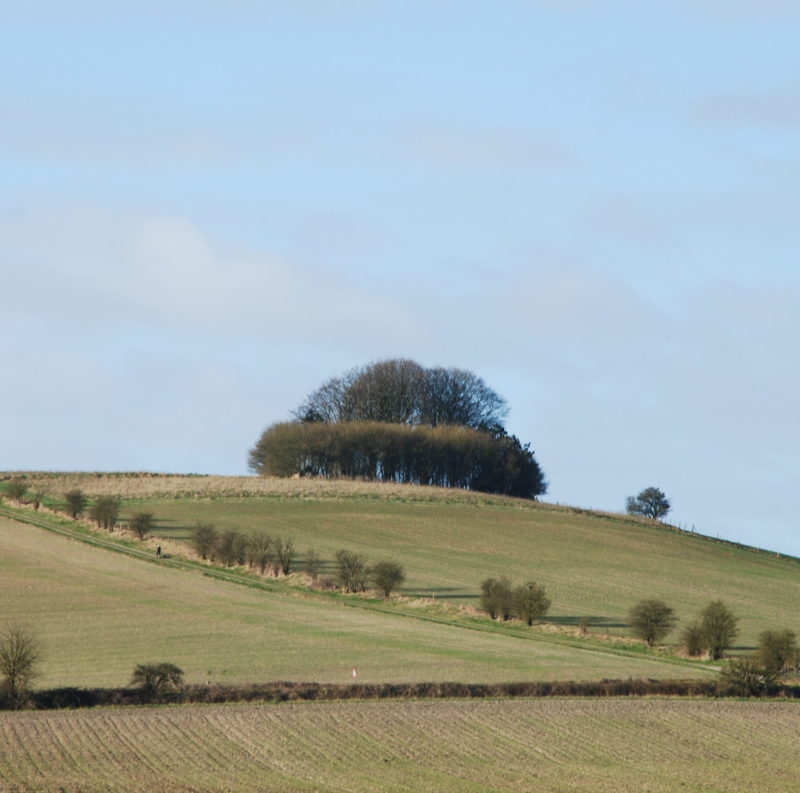Rising over 900 feet (275m) and with its clump of beech trees, Liddington Hill is visible for miles around.
The western side is topped by an Iron Age hillfort known as Liddington Castle where King Arthur is said to have defeated the Anglo Saxon armies. This is one of the earliest hill forts in Britain, with first occupation dating to the seventh century BC. The earthworks consist of a relatively simple oval bank of timber and earth fronted by a ditch, with opposing causewayed entrances on the east and west sides. The western entrance was later blocked off and the eastern one may have been lined with sarsen stones. A palisade of wooden posts may have lined the top of the bank. During a later phase the bank and ditch were improved and a rampart of dumped chalk, excavated from the enlarged ditch, increased the height of the bank.
Unlike the neighbouring castles of Uffington and Barbury, Liddington Castle is relatively unvisited in spite of being a clearly visible landmark to the millions who pass along the M4 motorway south of Swindon. While accessible by a permissive footpath and less than a mile from The Ridgeway it is not served by a car park, hence any visitor will usually find themselves quite alone to enjoy its secluded atmosphere.
There is also a World War 2 starfish decoy control bunker the purpose of which was to create localised fires to fool enemy bombers targeting Swindon. The Ridgeway National Trail runs across the hill.
We have a circular walk available to download from our website which starts at the base of Liddington Hill and follows a stretch of the Ridgeway. The walk is accessible by bus.
Further Information
Liddington Hill Circular Walk (4.5 miles)
What3Words: valid.tightrope.hamsters
Grid Reference: SU210796


